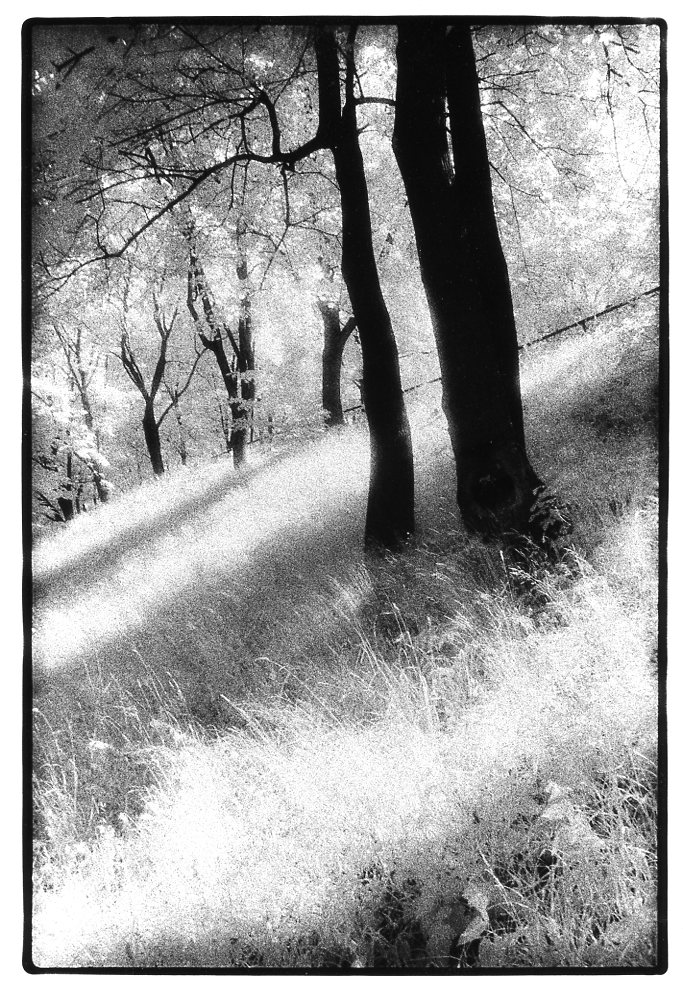What is Analogue Photography?
Photography is by its very nature analog. Rays of light are refracted, collected and form an image of the surroundings. The phenomenon was discovered a long time ago. At first it was landscape artists who made use of this. In a dark room, the light, coming through a small hole, displayed an image of the landscape outside that could be used to draw a picture of the landscape. Later there were lenses that improved the image. At the beginning of the 19th century, there were several people who tried to find ways to preserve the image, a chemical process that could make the direct image permanent. It was well known that the solar energy affect materials, but this usually takes a long time.
In 1827 it was possible to capture images through sunlight affecting an asphalt compound that was smeared on a plate and in 1839 the final breakthrough came when Daguerre managed to develop and preserve an image that was formed in light-sensitive silver compounds. Over the course of the 19th century, technology got better and better and various camera solutions were developed. Photography became more and more common. With the development of computer technology nearly 150 years later came the opportunity to capture the images in a new way. In the same way that the human eye captures images through the fact that small points of light-sensitive nerves react to the energy in the light rays, it was found that the images could be captured through light-sensitive "chips". The signals were turned into digital signals that could be interpreted by computer programs and recreated as images. Within a few years, the old analogue films and processes almost disappeared entirely.
More and more people are now interested in learning more about the analog processes again. The pictures and films provide a direct reproduction of the image that is drawn in the camera and the silver compound that captures the energy of the light turns into lasting and beautiful objects. While computer technology offers endless possibilities to change and manipulate the images, the analogue image gives an exact expression of what actually comes through the lens there and then. It can of course also be manipulated, but this requires a lot of craftsmanship and must be done through mechanical or chemical influence on the original image.
Many people appreciate this "authenticity" with analogue pictures. They are simple and in a way tell a truth. The image is still an abstraction and through the use of light, composition and photographic techniques, the images can become personal interpretations of reality. Nevertheless, we retain the "real" and "true" in a unique way in a world where it is becoming increasingly difficult to know what is actually true from what is being appeased.
The picture below is an accurate representation of trees and nature in a park in Oslo. It has been photographed with a film that is most sensitive to infrared light and therefore the green foliage is brighter than normal and gives the image a somewhat dreamlike feel. The light-sensitive grains in the film are visible and become part of the image. The black border around shows that this is the entire negative. This is exactly what was in the picture when it was taken and it has not been cropped or processed afterwards. It is perhaps precisely these qualities of analogue photography that make so many people want to learn more about analogue photography.

Magical experiences in the darkroom
With analogue images, it is in the darkroom that the magic happens. Film and paper are very sensitive to light and must either be processed in total darkness or with filtered light that does not affect the material. Most photographic films are sensitive to all light, and when developing a film you must therefore have full control over what is to be used before you can start the process. Where's the film, scissors, reels and tank. In the pitch black, the hands "see" and help you place the film in a developing tank that is light-proof so that the rest of the process can be done in low light. In the same way, you have to work in weak and colored light when the pictures are to be enlarged. You illuminate the sheet for a few short seconds and then drop the paper into the developer liquid. As you move the developing bowl, the image begins to emerge, like pure magic. All processes require accuracy and specific time intervals. Exactly the right temperature, mixing ratio, movement and time! Then the image can be fixed so that it can withstand light, and the impatient photographer can turn on the light and assess the result. It's as magical every time!
